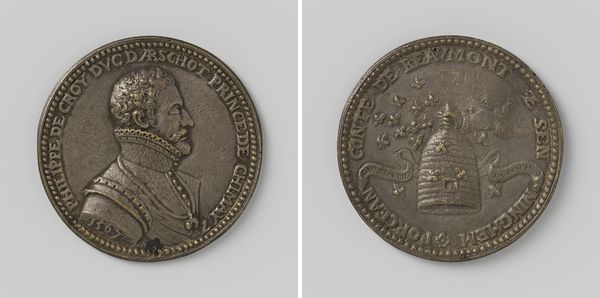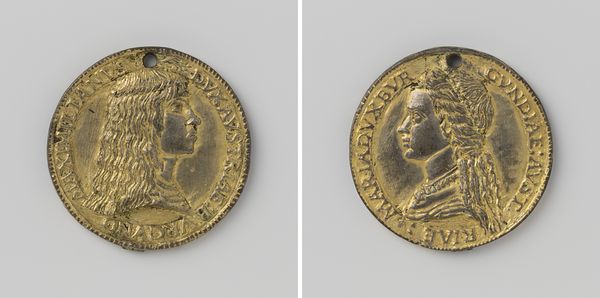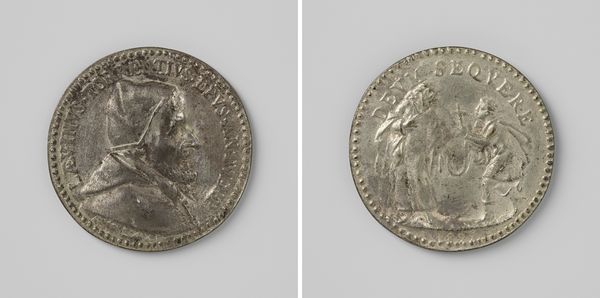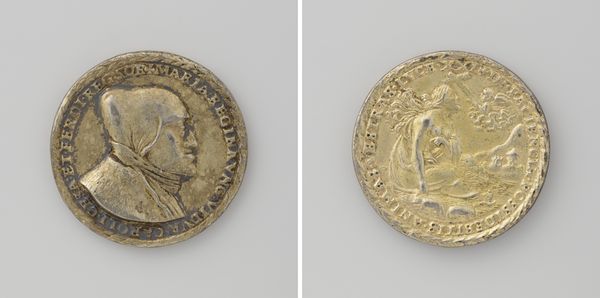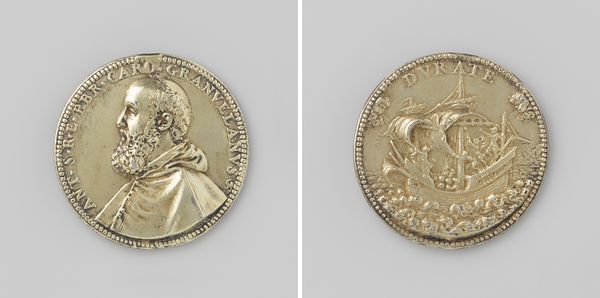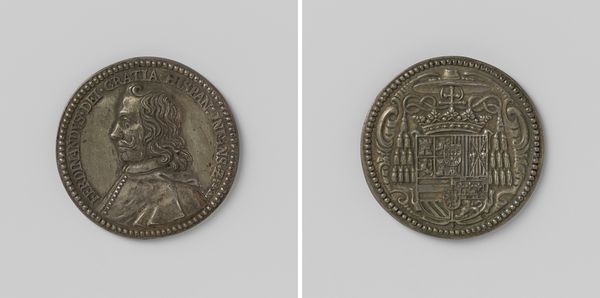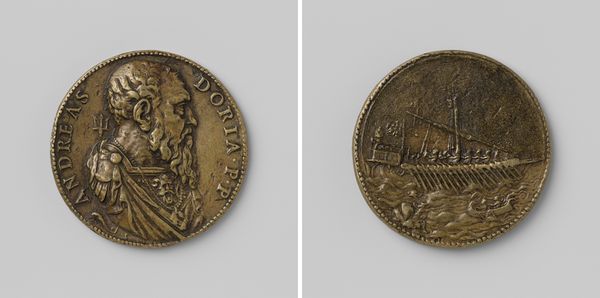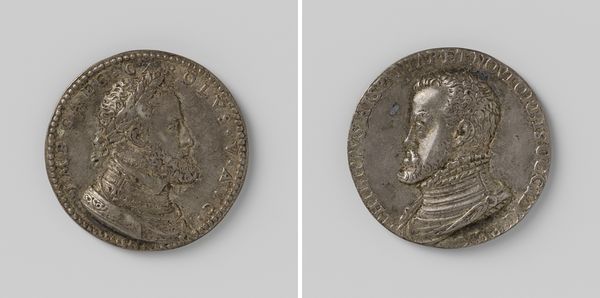
metal, relief, sculpture, engraving
#
portrait
#
baroque
#
metal
#
sculpture
#
relief
#
sculpture
#
history-painting
#
engraving
#
statue
Dimensions: diameter 4.8 cm, weight 26.61 gr
Copyright: Rijks Museum: Open Domain
Editor: This intriguing medal, dating back to 1622, portrays Engelbert Maes, the chairman of the Privy Council. I'm really drawn to its diminutive scale and how much detail they managed to fit on its surface. What can you tell me about how a piece like this might have functioned in its time? Curator: This piece functions less as art in our contemporary understanding and more as a form of propaganda or a badge of honour. Medals such as this were often commissioned to celebrate or commemorate individuals of power and influence. In this case, Engelbert Maes's position in the Privy Council would have made him a key figure. Consider the context of the early 17th century - how do you think representing political power was different from our representation of politicians today? Editor: It's like they're trying to create an image of enduring authority and influence through something seemingly permanent, like metal. Today we do similar things but on a much bigger scale: statues, street names etc.. This medal seems a lot more personal though. I suppose somebody actually wore it or had it on display somewhere in their house. Curator: Exactly. Think about how that intimacy changes the work. The small size encouraged closer inspection, prompting people to discuss Maes' virtues. Note the other side featuring the woman with a lamb and lion – how would these symbolic figures speak to the social and political values of the time? Editor: She looks like an allegorical figure; the contrast between the lion and the lamb could represent his fair and just character. Being moderate in times of power etc. I find that so relevant still to this day, it feels quite contemporary. Curator: Precisely. And this is how art continues to speak. The medal doesn’t just represent Maes, it promotes an ideal of governance still relevant today. It shows us how political figures aimed to craft and disseminate very specific public personas. Editor: It's fascinating to think about the active role art played in shaping public perception, even through these seemingly minor objects. Curator: Indeed. Studying objects like this allows us to look closely into those interactions and the political intentions behind imagery at the time.
Comments
No comments
Be the first to comment and join the conversation on the ultimate creative platform.
